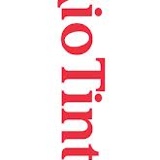Information
-
Areas inspected
-
Department
-
Conducted on
-
Prepared by
-
Inspection team
Land Clearing Audit Protocol
4-1 - 4-3 General Provisions
-
The permit initiator and clearing personnel have received land clearing training.
-
Proposed verfication method:
Run Prospect reports and verify that personnel on Land Clearing Sheets have been trained.
View Toolbox meeting minutes. -
The following have been made available to relevant personnel:<br>• Land Clearing Work Practice (RTIO-HSE-0123835); and<br>• Land Clearing Training on Prospect.<br>
-
Proposed verfication method: Personnel can navigate to in HSEQ MS.
-
The operators and spotters are experienced in land clearing and/or are supervised during boundary clearing.
-
Proposed verfication method:
View Land Clearing Sheet records and /or qualifications of operators
Run Prospect reports and verify that personnel have been trained.
Approvals Permit
-
Approvals Permit(s) have been obtained for all planned land clearing and are valid (scope and duration).
-
Proposed verfication method:
View site Land Clearing Register
View Land Clearing Sheets
Discussion with site teams / SEA
View clearing maps / compliance reports
Cross-reference Approvals Permit(s) with site Land Clearing Register (dates and areas)
Check current clearing works have a valid Approvals Permit
Land Clearing Sheet Process
4.51 – 4.52 - Administration and Planning
-
A sample of Land Clearing Sheets indicates the relevant Land Clearing Sheet (see RTIO-HSE-0147848 for template) has been completed correctly and in full.
-
Proposed Verfication Method:
The correct and current version of the Land Clearing Sheet form has been used.
Survey files have been provided in the correct format.
Clearing Sheet form has been correctly filled out and includes relevant signatures -
The Land Clearing Sheet includes appropriate attachments as required by the Land Clearing Guidance Note (RTIO-HSE-0147850).
-
Proposed verfication method:
Dxf/Vulcan files are included and have the proposed clearing polygon and topsoil stockpiles.
A map is included, is of sufficient scale and illustrates:
• the proposed clearing area;
• the approved Approvals Permit boundary;
• avoidance areas;
• topsoil stockpile locations;
• weed locations;
• 250k drainage lines;
• existing infrastructure; and
• tracks or roads. -
The proposed clearing will not exceed regulatory approved disturbance areas.
-
Proposed verfication method:
View the site Land Clearing Register and ensure that the:
• register has been maintained; and
• proposed clearing does not exceed:
o Native Vegetation Clearing Permits (NVCP’s)
o Ministerial Conditions
o Mining Proposal/Programme of Works
Confirm that site land clearing register is utilised by SEA when approving the Approvals Permit.
Check the ‘clearing limits tab’ in the site Land Clearing Register is tracking clearing against the approvals listed above and/or other clearing limitations. -
Topsoil stockpile locations and potential weeds and control have been considered in the Clearing Sheet application.
-
Proposed verfication method:
A visual inspection of the site and Clearing Sheet application confirms topsoil stockpiles:
• are adequately buffered from drainage lines and future planned works;
• are located within approved areas; and
• are demarcated as per the Soil Resource Management Work Practice (RTIO-HSE-0011596)
Where potential weeds exist, mitigation conditions are included on the Land Clearing Sheet and implemented on site. -
Clearing exemptions and the approved control measures are displayed/made available for the specific work area.
-
Proposed verfication method:
View Land Clearing Sheet
Discuss with operators how they are made aware of exemptions
Identify if exemptions exist through discussion with SEA
4.5.1 – 4.5.2 - Clearing Site Preparation
-
Surveying and pegging:<br>• The proposed clearing area has been correctly demarcated.<br>• Avoidance sites have been protected in accordance with the Iron Ore (WA) Heritage Site Protection Fencing Procedure OP44 (RTIO-CR-0236132).<br>• Demarcation of avoidance sites has occurred prior to clearing<br>
-
Proposed verfication method:
Physical site demarcation matches the approved Land Clearing Sheet and attachments (refer to Administration and Planning above).
Where possible use GPS to confirm.
4.5.3 - Clearing Authorisation – Review
-
A Site inspection prior to clearing has been conducted to ensure:<br>• Boundary pegging is correct for:<br>o CP permit area;<br>o Avoidance areas; and<br>o Non-relevant pegs are removed.<br>• Boundary pegging is visible:<br>o Correct flagging used;<br>o Corner point indicators used; and<br>o Pegging is visible from clearing direction.<br>
-
Proposed verfication method:
A site inspection using GPS (where possible) of imminent clearing area confirms:
• Boundary pegging is appropriate and visible; and
• area on Land Clearing Sheet matches physical demarcation of clearing areas and avoidance areas.
The Land Clearing Sheet has been signed off by the Supervisor. -
A GPS Guidance System has been installed in clearing equipment. It contains the following data files:<br>• Approvals Permit boundary;<br>• Clearing Sheet boundary; and<br>• Avoidance areas.<br>
-
An inspection of clearing equipment to be used for imminent clearing (where possible) confirms:
• GPS guidance system installed; and
• Correct data files installed.
The clearing equipment operator is competent in use of GPS Guidance System.
Land Clearing Sheet shows that GPS was checked prior to work commencing.
4.5.3 – Clearing Authorisation – Physical Clearing
-
A JHA is completed and has been:<br>• reviewed by all team clearing personnel;<br>• attached to the Land Clearing Sheet<br>• reviewed each day of clearing; and<br>• changes/additions to clearing personnel are noted on the JHA.<br>
-
Proposed verfication method:
Sight past and/or current JHA for land clearing activities.
Where changes/additions to clearing personnel have occurred:
• on-coming personnel attended pre-start meeting (refer to pre-start meeting verifications above);
• new personnel have signed onto the JHA; and
• a handover has been conducted. -
The Land Clearing Sheet and copies are available in the field and have been signed off by clearing personnel.
-
Proposed verfication method:
An inspection confirms that:
• the original Land Clearing Sheet is located in the cab of the operating clearing equipment:
• a copy of the Land Clearing Sheet is filed in the office; and
• all copies of the Land Clearing Sheet have been signed by the relevant clearing personnel. -
Familiarisation of the clearing area prior to clearing:<br>• Clearing personnel physically inspect clearing area and boundaries.<br>
-
Proposed verfication method:
Check JHA or task list booklets for note of inspection. -
Clearing equipment operators and clearing spotter maintain radio contact.
-
Proposed verfication method:
Site visit to ‘in progress’ clearing site (where possible) confirms:
• an experienced spotter is present during boundary clearing;
• equipment operator and spotter have radio’s; and
• the radios’ are operational.
4.5.4 Clearing Permit Close Out
-
Clearing has been undertaken in accordance with Land Clearing Sheet and Approvals Permit requirements.
-
Proposed verfication method:
A site inspection using GPS and cross-reference with Approvals Permit and Clearing Sheet confirms clearing conditions were met.
Non-conformances have been identified and reported in accordance with the Iron Ore (WA) Non Conformance, Incident and Action Management Work Practice (RTIO-HSE-0063098). -
Clearing areas have been appropriately surveyed and clearing data is maintained in accordance with Land Clearing Sheet Guidance Note.
-
Proposed verfication method:
The clearing area has been surveyed and:
• files are available and show:
o total area cleared;
o total area rehabilitated;
o topsoil stockpiles; and
o topsoil stock pile volumes.
Cleared area surveys have been conducted quarterly and is confirmed by the site Land Clearing Register
The site Land Clearing Register has been updated with:
• total area cleared; and
• total area rehabilitated data.
Confirm the total area cleared does not exceed regulatory approvals (NVCP’s, Ministerial Conditions etc).
A site Topsoil register exists and:
• contains topsoil stockpile locations;
• is in GIS format; and
• data is up to date. -
The Land Clearing Working Group has approved any deviations to Land Clearing Work Practice in writing
-
Proposed verfication method:
Confirm any deviations or alterations have been approved in writing by the Land Clearing Working Group
Summary of actions
-
Are actions required to be raised?
-
Action number and description
Inspection action
Sign offs
-
Area owner representative
-
Environmental representative / Auditor
















